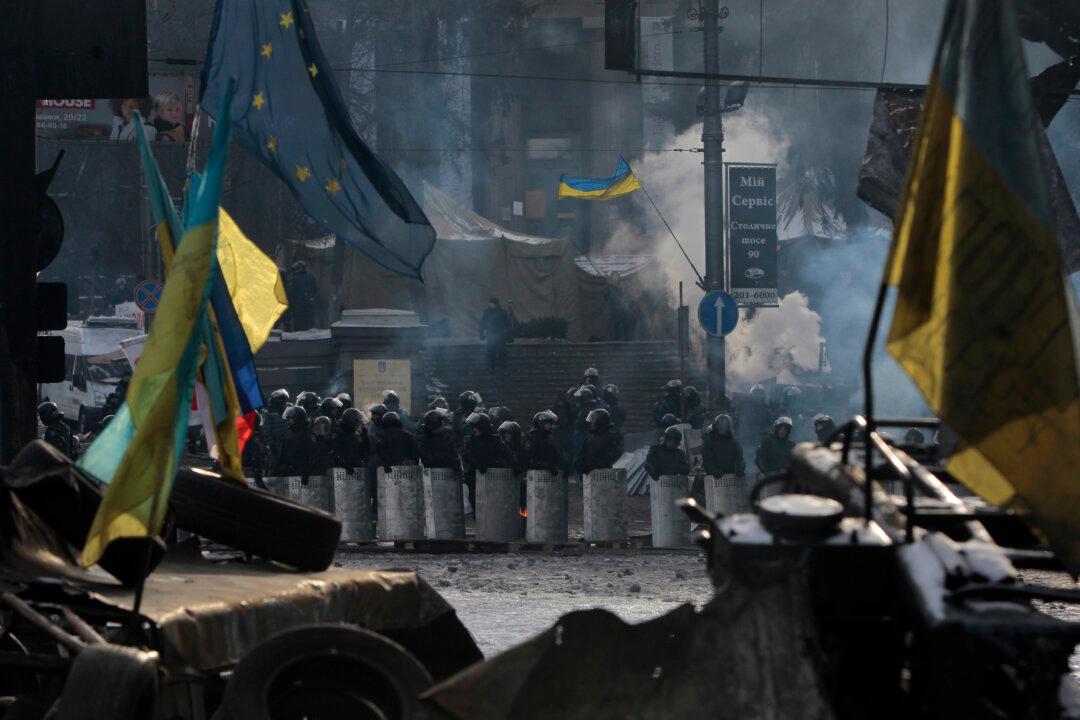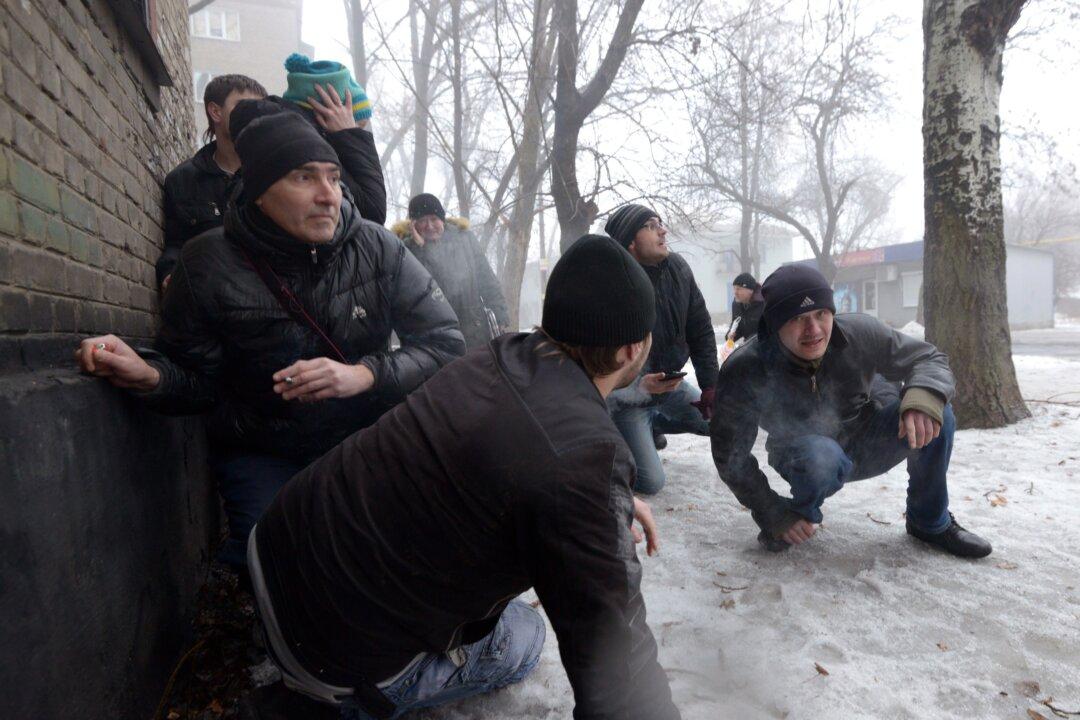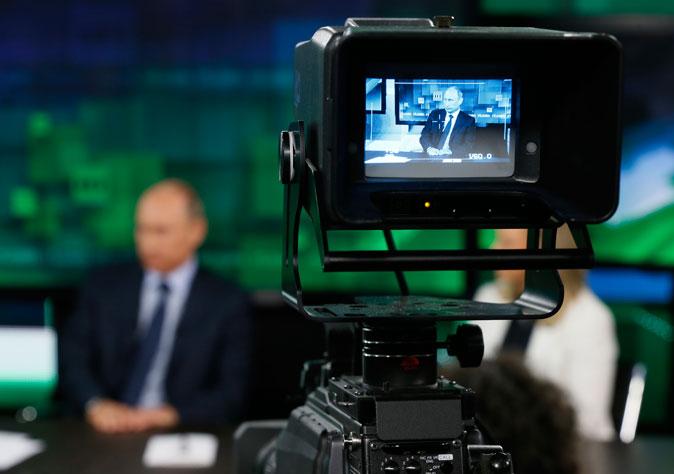Recent images emerging from Ukraine reveal a country which in places resembles a battlefield, causing some to comment on the possibility of the country sliding into civil war.
These fears were generated by the escalation in numbers taking to the street and of violence which resulted in the killing of a handful of protesters during the past week and by the occupation of key administrative buildings in Kiev, including the Justice Ministry, as well as of regional administrative buildings.
This turn was caused by the Ukrainian parliament’s passing of draconian anti-protest laws on January 16. Widely perceived to have been passed without due democratic process, this legislation would effectively have criminalised key aspects of political protest. As a result, the hitherto relatively peaceful and contained protests against the government’s decision to reject an association agreement with the EU in favour of closer relations with Russia shifted into high gear.
Ukrainians were not the only critics of the anti-protest laws. Both the EU and the Council of Europe (CoE) expressed concerns, the latter asking the government at least to suspend the legislation while it considered its compatibility with the European Convention on Human Rights.
In a pointed comment, Russia’s foreign minister, Sergey Lavrov, warned of the dangers of external parties fuelling the flames further. Russia can fairly be accused of disingenuousness, of course, following its £9 billion loan to Ukraine that came hot on the heels of Ukraine rejecting deeper ties with the EU. The 16 January legislation was also familiar to Russia watchers, who had seen similar legislative constraints against public protest passed since Putin’s return to the presidency in 2012.
Some Government Concessions
Despite the high cost, including to life, Ukrainian protests in defence of democracy have so far been effective in achieving concessions. Testament to this was the news that the much-detested legislation was to be repealed, accompanied by the resignation of the prime minister, Mykola Azarov.
At the same time, supporters of President Yanukovych have not been unreasonable in their claim that the protest is anti-democratic given that Yanukovych and the government were elected officials. The problem is the perception that corruption is rampant within Ukraine’s political system – and Yanukovych is widely deemed to constitute a big part of the problem. The question is therefore whether concessions made are too little too late to save Yanukovych himself.
The concessions are easily explained. The increased geographical spread of protest took many by surprise, with protests occurring even in those regions that are considered to be supportive of the president. Zaporizhya is a case in point, located in the south-east of the country, with a large ethnic Russian population where Russian is commonly spoken. On Monday January 27, anti-government protesters trying to occupy administrative buildings faced off against pro-government protesters, resulting in riot police being called out; a symbol of the divisions that exist in Ukrainian society – but a sign too that Yanukovych is more embattled than was previously thought.
Officially, Yanukovych remains in charge of the country’s security forces, including troops and riot police. In the face of reports that the justice minister, Olena Lukash, had threatened to declare a state of emergency, protesters occupying the Justice Ministry retreated, while the EU’s high representative, Catherine Ashton, moved her planned visit to Ukraine forward in the hope of helping to calm the situation.
That the protesters are willing to step back and that Yanukovych has so far not used the full weight of force against the protests is hopeful and suggests that Yanukovych and his opponents understand what is at stake. It should be acknowledged too, however, that Yanukovych’s restraint in this regard might be indicative of his own doubts about where the loyalties of the individual members of the army, police, etc, lie and therefore how likely they would be to tackle the protesters.
President’s Future Uncertain
Despite the compromises, it is difficult to envisage a future where Yanukovych remains in power, although there is cause to believe that the result of elections would be respected (as long as they are perceived to be free and fair). Events after the Orange Revolution, including Yanukovych’s own election, have shown that Ukrainians are prepared to abide by electoral results.
While it would be a mistake to treat the opposition as a monolithic block, two of the opposing parties do share some commonalities and between them are likely to ensure that certain issues sit at the top of any election campaign and then government agenda after this.
Three main parties constitute the opposition: Yatseniuk’s Fatherland, Klitschko’s UDAR (Ukranian Democratic Alliance for Reforms) and Tyahnybok’s Svoboda, a far-right party regarded by many as xenophobic. Yatseniuk and Klitschko share common ground in their fight against corruption, their opposition to Yanukovych and their preference for a Ukraine-EU future.
A Stark Choice
Seen from the perspective of external parties, the EU has made clear that Ukraine’s road to closer association remains open if that is what Ukraine wants. Russia, however, constitutes a problem. The EU has been extremely critical of the tactics previously used by Russia, which were widely deemed to have caused the Ukrainian government to turn away from the EU.
Certainly, Russia has made clear that deepening Ukraine’s relationship with the EU would mean Ukraine could not join the Customs Union, currently formed of Belarus, Kazakhstan and Russia, while Armenia also recently announced its attention to join (turning from the EU in the process).
Ukraine’s membership would ensure its access to Russia’s and other neighbouring states’ markets as well as, crucially considering Ukraine’s high dependency on it, a better price for Russian gas. Ukraine has to consider also the fact that a regional Customs Union will likely confer fewer immediate costs on the ailing Ukrainian economy than an Association Agreement with the EU and all that would mean in terms of loss of Russian goodwill and assistance and diverting of money into addressing institutional deficiencies in the Ukrainian political system.
Whatever the outcome of the current state of affairs, Ukraine not only remains faced with a stark choice between facing East or facing West. It is faced with the choice of a short-term economic fix in the form of Russian assistance and a long and painful political and economic reform process which is likely to be the outcome of closer association with the EU.
Maxine David does not work for, consult to, own shares in or receive funding from any company or organisation that would benefit from this article, and has no relevant affiliations. This article was originally published at The Conversation. Read the original article.


